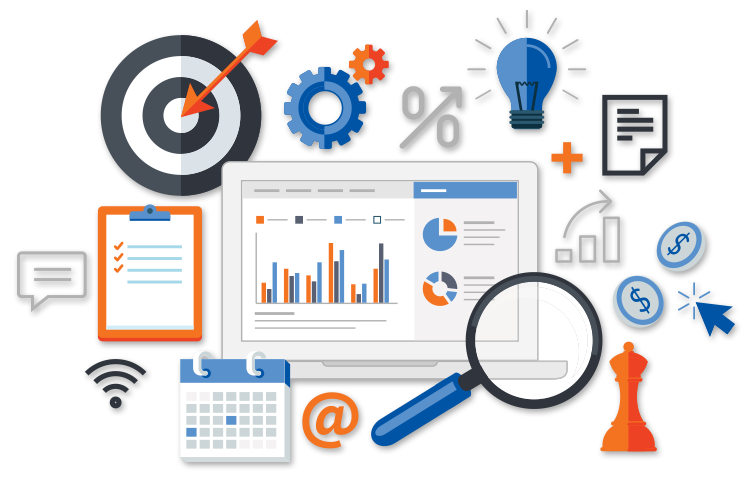
Google Adwords is a form of pay-per-click advertising that offers an effective way to drive targeted traffic to your website. It’s a powerful and profitable tool, but to remain competitive, you need to stay on top of changes as they happen.
This year some features are being removed by Google Adwords, included removal of the average position column and removal of accelerated ad delivery in some campaign types. How will these changes impact your business, and what will replace these features that are being retired?
Removal of Average Position Metric
The average position metric was one of the original search metrics and was used as a reporting indicator of where an ad fell in Google search results. It was a statistic that compared how your ad ranked against other ads and determined the order that ads appeared on a search page.
Analyzing your ad position using average position was intended to give you an idea of whether to increase or decrease your bids. These metrics could help you to understand changes in click-through rate and how they may have been related to changes in the position of your ads.
Google continues to evolve, and this sometimes means changing how they display their search results. Average position reflected an ad’s rank compared to other ads, but the actual location of an ad on the page wasn’t always clear. This meant that average position didn’t tell the whole story regarding where your ads were showing, and for this reason, it began to lose its usefulness. Google announced the decision to retire average position metrics in favor of a new set of metrics.
New Metrics That Replace Average Position Columns
Average position was removed from Google interface on September 30, 2019, but new metrics were added in November 2018. The decision to sunset average position was only made once Google had determined that they were able to introduce new metrics that provided better information to advertisers.
New metrics pertain to search engine results page visibility and auction performance. They include:
- Top impression share – This shows the rate in which you turn eligible top impressions into impressions that actually appear at the top of the results page.
- Absolute top impression share – This is based on the rate in which you turn opportunities to appear at the very top of the search engine results page into actual impressions at the top of the SERP.
- Top impression rate – Based on top impressions divided by total impression, this metric shows the percent of your ads that appear above the organic search results.
- Absolute top impression rate – This is the percent of your impressions that appear in the #1 position.
These new performance metrics are intended to provide a more accurate picture of where paid ads appear on a search engine results page. Having a clearer idea of where you appear on the results page can help you make much more informed bidding decisions.
Removal of Accelerated Ad Delivery
Your ad delivery method can determine how long your advertising budget lasts. Accelerated ad delivery was an option not used by most advertisers. It was an option that allowed you to show your ads mostly early in the day if that’s when you believed your audience was most receptive to them. You may also have used it to maximize impressions and increase click volume rather than allowing Google to have control over when your ads were shown based on their signals.
Accelerated ad delivery had a lot of drawbacks. It could spend your budget rapidly and exhaust your budget early in the day. Your ad may not have been shown to other prospects who might have seen your ad later in the day, or to prospects in certain time zones.
Google made the decision to remove the option for accelerated ad delivery for search campaigns, shopping campaigns or shared budgets starting October 14, 2019. Advertisers using this type of campaign are automatically migrated over to standard delivery. Google believes that accelerated delivery was not producing desired results in most cases, and that standard delivery is more likely to get more clicks and more conversions.
The Impact of These Changes on Your Business
The important question for marketers and small business owners is how will these changes impact your business, particularly when it comes to PPC strategy? As metrics change, advertisers have to rethink bidding strategies that may have become outdated. Changes to metrics may require updating reports that are presented to shareholders. Removal of accelerated ad delivery is an example of a way in which machines are being used to determine how ad campaigns get optimized.
Like other aspects of running a business, things are constantly changing, and marketers have to adjust to changes as they happen. PPC advertising is one of the most effective ways of marketing your business, as long as you thoroughly understand everything that’s involved. If you miss important details of what needs to be done including updates and changes, it can have a big impact on your profits or advertising expenses
Professional Management of PPC
The continual changes in PPC advertising can absorb a large amount of time if you strive to learn what’s required to master them. With the removal of key features and the addition of new metrics, it may not be an option to keep doing things the way you’ve always done them.
An easier method of staying on top of changes in Adwords and other PPC strategies is to rely on the expertise of professionals in the field of advertising. At Softline Solutions, our experts can make sure you have all the important information you need in order to stay on top of the new trends in Google Ads and PPC strategies. Our experts can also help you to avoid overpaying for clicks. With experts in your corner, your business will be able to handle changes in Google Adwords seamlessly. When you work with us using our simple and sophisticated PPC solutions, we can help you to reach your online potential. Get in touch today!









